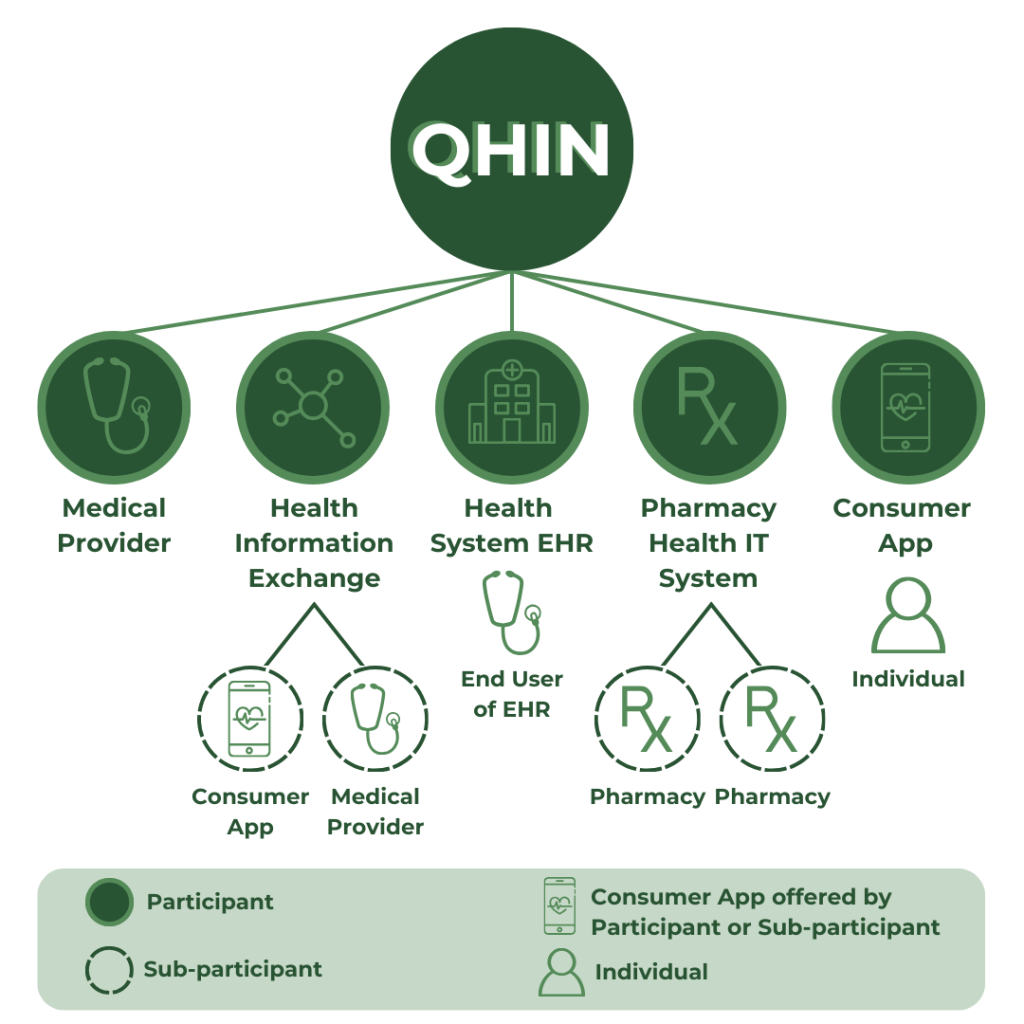One of the biggest challenges we have in healthcare is that data is hard to connect. It’s usually only available through regional health exchanges, and even then, use is restricted. We are often limited to general, point-to-point connections, with scarce (if any) ability to connect data on a larger scale. Enter TEFCA – the national interoperability framework that aims to fix this issue.
If you’ve been hearing about TEFCA but aren’t sure exactly what it’s about, this blog is for you. Warning, this blog will resemble alphabet soup! Here is a handy guide to all of the acronyms you’ll find within.
What is TEFCA, exactly?
TEFCA stands for the Trusted Exchange Framework and Common Agreement. In essence, it’s a national framework to exchange and share critical patient data.
TEFCA was born from the 21st Century Cures Act, which required the Office of the National Coordinator for Health Information Technology (ONC) to build a national pathway for interoperability using either existing frameworks or new technology. TEFCA is the foundation of a national interoperability solution for patient data access. In addition, TEFCA will establish a common language, a set of common terms and principles to support the development of data exchange.
TEFCA History

What’s the TEFCA Framework?
Governance
The Cures Act requires that TEFCA be governed by a single entity, called the Recognized Coordinating Entity (RCE), that is responsible for developing, implementing and maintaining the TEFCA framework. The Sequoia Project has been chosen as the RCE for TEFCA.
What is The Sequoia Project?
The Sequoia Project is a non-profit collaborative advocate for health data exchange at a national level. As a neutral body that champions public interest, The Sequoia Project has been selected by ONC as the RCE for TEFCA to ensure transparent oversight of the data exchange. How’s that for a bowl of alphabet soup?
TEFCA Structure
With The Sequoia Project established as the governing entity for TEFCA, the actual framework and execution will rely on a series of networks called Qualified Health Information Networks (QHINs).

A QHIN is an organization that will connect health information networks on a national scale. QHINs will take data from numerous participants including healthcare vendors like HealthMark as well as provider organizations like hospitals and practices, and apply the standards laid out by The Sequoia Project to facilitate the exchange of data with other QHINs. The following approved QHINs were announced in December 2023:
- eHealth Exchange
- Epic Nexus
- Health Gorilla
- KONZA
- MedAllies
Participants in TEFCA can select which QHIN to connect with, and that QHIN will aggregate their data along with the data from their other participants. QHINs will connect directly to each other, facilitating nationwide interoperability.
The idea is that QHINs will be a more centralized “network of networks” than we’ve had in the past, and they will be accountable to following the framework and standards laid out by TEFCA.
Key Objectives of TEFCA
Now that we’ve covered the basics of how TEFCA will work, what exactly does TEFCA aim to achieve for its key stakeholders?
- Providers: TEFCA will provide a complete picture of care in one place, which is a massive improvement to the status quo for most healthcare organizations.
- Patients: TEFCA will provide better access to their records and data while simultaneously giving them better control of their information.
- Public Health: Through TEFCA, public health programs will gain an enhanced understanding of health metrics and a better reflection of the health of their populations. Programs will also benefit from easier reporting and data management.
- Payers: TEFCA will allow payers to gain access to and share data, improving the management and assessment of value-based care as well as other initiatives.
What’s Next?
2023 was a marquee year for TEFCA. QHINs have been selected, and now TEFCA is in its pilot phase. 2024 will be a critical year as refinement, iteration and updates based on the pilot phase will help determine the future of TEFCA.
Right now, participation in TEFCA isn’t required, but it may be in the future – so don’t wait to get involved. TEFCA has the potential to make a huge impact on healthcare in the US, but only if it can gain enough participation from organizations to empower patients and providers through their data.